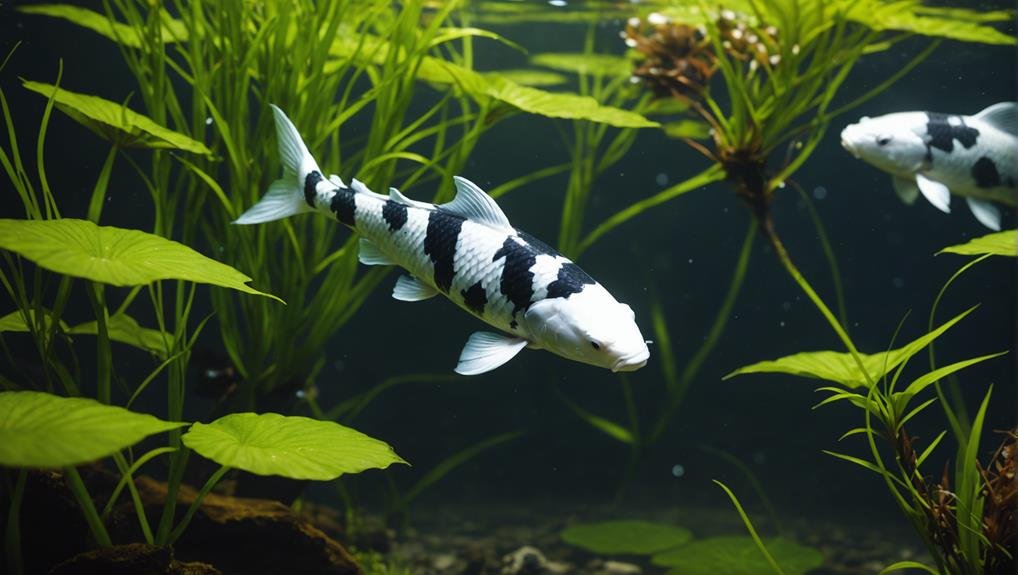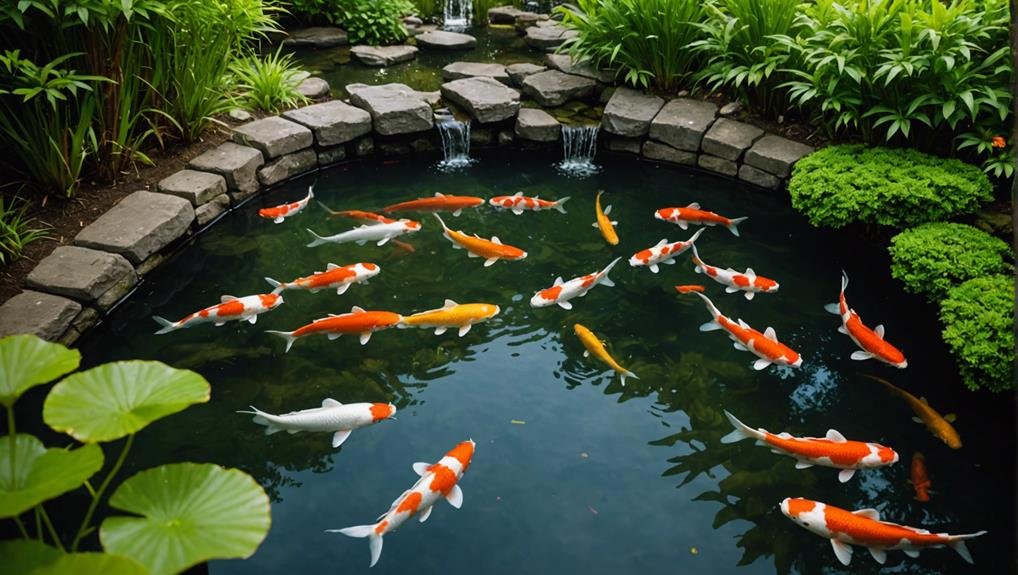Bekko Koi, known for their distinctive tortoiseshell patterns, have a history dating back to the domestication of common carp in East Asia around 6,000 B.C. Through modern breeding efforts in China and Japan, their colors and patterns have been refined. The Bekko varieties, such as Aka (red), Shiro (white), and Ki (yellow), are carefully assessed for symmetry, vibrant colors, and pattern distribution. To ensure the health and vibrancy of these fish, it is crucial to maintain high water quality and provide a nutritious diet. Additionally, adequate swimming space and proper filtration systems play a significant role in supporting their overall well-being. The prices of Bekko Koi can vary depending on factors like size, quality, and variety. By prioritizing the care and specific needs of these resilient and beautiful fish, they can thrive in their environment.
Some of the links in this article may be affiliate links. If you make a purchase through these links, we may earn a small commission at no extra cost to you. Thank you.
Origin and History
The Bekko Koi, a captivating type of ornamental carp, has its roots in the domestication of common carp in East Asia around 6,000 B.C. These koi have evolved over time, leading to the diverse varieties we see today. Modern breeding practices, dating back to the 4th century in China and Japan, have honed their unique patterns and colors. The term 'Bekko' translates to 'tortoise shell' in Japanese, reflecting the characteristic black patches known as Sumi. Bekko Koi hold cultural significance, symbolizing resilience and beauty in Japanese culture. Major Bekko varieties include Aka (red), Shiro (white), and Ki (yellow), each adding to the vibrant world of koi appreciation and breeding.
Judging Criteria
Bekko Koi judging involves a detailed assessment process that focuses on symmetry, unique patterns, and proportional body features. Symmetry evaluation is crucial, emphasizing the fish's balance and torpedo-shaped body. Color vibrancy is of utmost importance, with judges looking for bright, consistent colors. The distribution of Sumi (black) patches should be even and not bleed into other colors. Furthermore, the proportionality of the head, fins, and body plays a significant role in scoring. Understanding these criteria is essential for recognizing the beauty and quality of Bekko Koi.
Health and Growth

To ensure Bekko Koi are in optimal health and exhibit vibrant growth, it is essential to pay close attention to their environment and diet. A well-maintained tank plays a vital role in enhancing their color vibrancy and overall well-being. Key factors to consider include:
- Water Quality: Regularly check and maintain pH levels, as well as monitor levels of ammonia, nitrite, and nitrate to create a healthy aquatic environment.
- Temperature Regulation: Keeping the water temperature within the range of 50°F to 78°F supports the growth and vivid coloration of Bekko Koi.
- Nutritional Balance: Feeding them a diet with a minimum of 30% protein, along with color-enhancing supplements, is crucial for their health and vibrant color display.
- Adequate Swimming Space: Providing enough space for them to swim freely helps prevent stress and supports their healthy development.
Care Tips
To ensure your Bekko Koi thrive, focus on maintaining a clean and stable aquatic environment. Water quality is key to their well-being, so regularly test pH, ammonia, nitrite, and nitrate levels. Keep the water balanced by using good filtration systems and doing routine water changes to prevent harmful toxin buildup. Quality water not only supports their health but also enhances their vibrant colors, making their patterns more beautiful. Feed them a nutritious diet with color enhancers to maintain their vivid hues. Adequate space and proper aeration are crucial for their natural behavior and growth, ensuring they are happy and healthy in their environment.
Pricing and Purchasing

When considering the purchase of Bekko Koi, it's important to note that prices can vary significantly based on factors like variety, size, and quality. To ensure the health and authenticity of the fish, it is crucial to buy from reputable breeders. Understanding the specific water quality requirements of Bekko Koi is also essential for their well-being. Here are key factors to consider:
- Variety: Shiro Bekko are generally more affordable compared to Aka or Ki Bekko.
- Size: Larger koi tend to be more expensive due to their age and development.
- Quality: Koi with high-quality patterns fetch higher prices in the market.
- Source: Purchasing from reputable breeders ensures healthier fish and minimizes potential health risks in the future.
Considering these factors will help you make an informed decision when purchasing Bekko Koi.
Conclusion
Bekko Koi fish have a deep-rooted history and distinct patterns that make them stand out in the world of koi culture. These fish are judged based on strict criteria that focus on symmetry, proportional body features, and vibrant Sumi patches. To ensure the health and growth of Bekko Koi, it is crucial to provide them with proper care, including a clean environment, balanced nutrition, and ideal water conditions. The pricing of Bekko Koi can vary significantly, underscoring the importance of purchasing from reputable breeders to guarantee the acquisition of healthy specimens.

